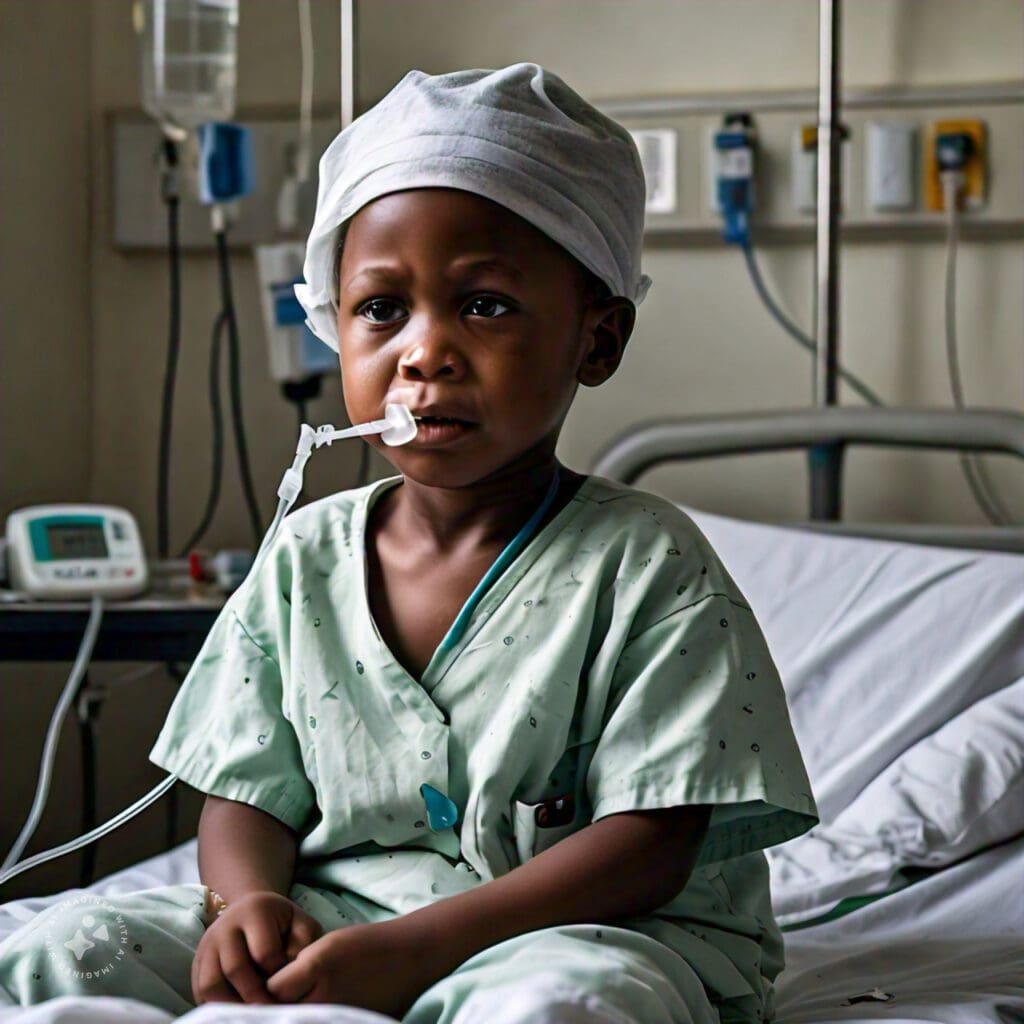Lung infections, such as pneumonia and bronchitis, are common, yet often overlooked, health challenges among Nigerian children.
Even though they’re quite common, not many people talk about them or understand them well.

This lack of awareness can result in delayed diagnosis and treatment, which can increase the risk of severe health complications.
This article seeks to shed light on the various types of lung infections in children, their causes, symptoms, prevention, and treatment, with a focus on the Nigerian context.
Understanding Lung Infections in Children
Lung infections, or lower respiratory tract infections (LRTIs), affect the lungs and airways. In children, the most common lung infections include:
- Pneumonia: An infection that inflames the air sacs in one or both lungs, which may fill with fluid or pus. Pneumonia can be caused by bacteria, viruses, or fungi.
- Bronchitis: Inflammation of the bronchial tubes, often due to viral infections. It causes coughing, shortness of breath, and chest discomfort.
- Bronchiolitis: A viral infection, usually caused by respiratory syncytial virus (RSV), that affects the small airways (bronchioles) in the lungs, primarily in infants.
- Tuberculosis (TB): A bacterial infection that can affect the lungs and other parts of the body, posing a serious health risk for children in endemic areas like Nigeria.
Causes of Lung Infections in Nigerian Children
Several factors contribute to the high prevalence of lung infections in Nigerian children:
- Poor Air Quality: Exposure to indoor air pollution from biomass fuels (e.g., cooking stoves), as well as outdoor pollutants, increases children’s susceptibility to respiratory infections.
- Malnutrition: Malnourished children are more prone to infections due to weakened immune systems.
- Lack of Vaccination: Inadequate immunization coverage leaves children vulnerable to preventable diseases like pneumonia and TB.
- Overcrowding: Living in overcrowded environments can increase the spread of respiratory infections, particularly during the rainy season when viral infections are more common.
- Limited Access to Healthcare: Delayed access to medical care, especially in rural areas, can worsen lung infections due to untreated symptoms.
Symptoms of Lung Infections in Children
Parents and caregivers should watch for the following symptoms in children:
- Persistent cough
- Fever and chills
- Rapid or difficult breathing
- Chest pain
- Loss of appetite
- Fatigue or lethargy
- Wheezing (especially in cases of bronchiolitis)
In severe cases, pneumonia can lead to cyanosis (bluish skin), indicating insufficient oxygen, which requires immediate medical attention.
Prevention of Lung Infections
Preventive measures are essential in reducing the burden of lung infections among Nigerian children. These include:
- Vaccination: Ensuring that children receive routine immunizations, such as the pneumococcal conjugate vaccine (PCV) and Haemophilus influenzae type B (Hib) vaccine, which protect against pneumonia.
- Improved Nutrition: A balanced diet rich in vitamins and minerals strengthens the immune system and reduces the likelihood of infection.
- Better Air Quality: Reducing exposure to smoke from indoor cooking, improving ventilation in homes, and avoiding smoking around children can significantly lower the risk of respiratory problems.
- Hygiene Practices: Encouraging regular handwashing and good hygiene can help prevent the spread of viruses and bacteria that cause lung infections.
- Breastfeeding: Exclusive breastfeeding for the first six months of life provides vital antibodies that help protect babies from infections.
Treatment and Care
Treatment of lung infections depends on the type and severity of the condition:
- Antibiotics: Bacterial infections like pneumonia and TB require antibiotics prescribed by a doctor.
- Antiviral Medication: In cases of viral lung infections, such as RSV, supportive care (hydration, oxygen therapy) and sometimes antiviral medication may be necessary.
- Hospitalization: Severe cases of pneumonia or bronchiolitis may require hospitalization, particularly when the child has difficulty breathing or needs intravenous (IV) fluids or oxygen.
- Follow-Up Care: It’s important for children who have had a lung infection to receive follow-up care to ensure complete recovery and prevent complications.
The Role of Awareness and Advocacy
Despite the high prevalence of lung infections, public awareness remains low. More initiatives are needed to educate parents and caregivers about the dangers of lung infections and how to recognize symptoms early. Government campaigns, healthcare outreach programs, and collaborations with non-governmental organizations (NGOs) can play a critical role in driving awareness and providing access to preventive and curative services, especially in underserved communities.
Conclusion
Lung infections are a significant, yet underdiscussed, health challenge for Nigerian children. By increasing awareness, improving access to healthcare, and promoting preventive measures such as vaccination and better hygiene, the burden of these infections can be significantly reduced. It is essential for parents, caregivers, and healthcare providers to work together in addressing this public health concern and ensuring that Nigerian children receive the care and protection they deserve.



